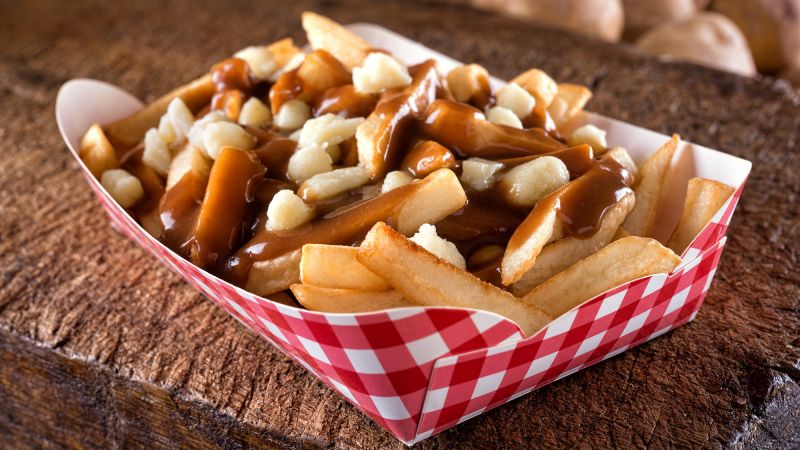Ask a Canadian to describe their national cuisine, and you might encounter a moment of hesitation, followed by mentions of poutine and maple syrup. It’s a challenging question, given Canada’s vast expanse of 3.8 million square miles, making it the world’s second-largest country. This immense space offers a diverse array of ingredients that have shaped the culinary traditions of its multicultural population.
From the Indigenous communities to the waves of immigrants who have settled across the nation, Canadian cuisine is a tapestry of flavors. Skilled chefs from Indigenous backgrounds are increasingly highlighting traditional flavors, presenting them in innovative ways across restaurants and food trucks. Meanwhile, the influences of various immigrant communities have enriched Canada’s culinary landscape, some dating back centuries.
The Multicultural Mosaic of Canadian Cuisine
Clayton Ma, an editor with the Canadian Encyclopedia, emphasizes that Canadian food is defined by its multiculturalism. “For instance, the Chinese Canadian community has established strong roots, and the Chinese food scene in places like the Greater Toronto Area rivals that of Hong Kong,” he notes. The country’s settler cuisines have been shaped by successive waves of immigrants, including Jewish, Ukrainian, Chinese, Portuguese, and South Asian communities.
While there may not be a single dish that encapsulates “Canada on a plate,” poutine stands out as a culinary icon. Originating in rural Quebec in the late 1950s, poutine’s simple combination of French fries, cheese curds, and gravy has been reinvented in countless ways. “In Montreal, poutine has been reshaped by various gastronomic cultures,” Ma explains, citing examples like smoked meat poutine and Vietnamese-inspired variations.
Iconic Canadian Dishes
Poutine
Poutine, with its humble roots, is now a staple across Canada. The dish’s success lies in the quality of its ingredients, such as Prince Edward Island potatoes. While its exact origins are debated, most agree it emerged in Quebec in the late 1950s. Today, poutine is a canvas for culinary creativity, with variations like butter chicken poutine and Haitian-style poutine.
Beaver Tails
These beloved pastries, resembling a beaver’s tail, are deep-fried and topped with sweet ingredients. Originally homemade, they are now available at BeaverTails restaurants nationwide. Former US President Barack Obama famously enjoyed one during a visit to Ottawa in 2009.
Nanaimo Bars
A no-bake treat with three layers, Nanaimo bars are a staple at Canadian gatherings. Their origins are debated, but they gained fame through the Expo 86 cookbook. The city of Nanaimo on Vancouver Island proudly celebrates this dessert.
Tourtière
This meat pie, with a flaky crust, is a Quebecois classic often served at Christmas. Its history dates back to the 1600s with French settlers in Quebec. Fillings typically include ground beef, veal, or pork, along with spices like cloves and nutmeg.
Saskatoon Berry Pie
Famous in the prairie provinces, Saskatoon berry pie features a nuttier version of blueberries. The berry has cultural significance for Indigenous communities and is used in various dishes, from pies to teas.
Regional Specialties and Culinary Heritage
Bannock
Originally a Scottish bread, bannock is now associated with Canada’s First Nations. It’s a versatile bread, often deep-fried or baked, with unique recipes passed down through generations. Restaurants and food trucks across Canada offer their own takes on bannock.
Lobster Rolls
While the US may claim the invention of lobster rolls, Canada’s versions are equally delicious, featuring Atlantic lobsters. The provinces of Newfoundland and Labrador, New Brunswick, Nova Scotia, and Prince Edward Island are prime locations to sample these delicacies.
Split Pea Soup
This comforting dish, with yellow split peas and pork, has roots in the 17th century with French sailors and fur traders. It remains a beloved staple of Quebecois cuisine today.
Butter Tarts
Butter tarts, with their flaky pastry and sweet filling, are a Canadian favorite. The first published recipe appeared in 1900, and they remain a beloved dessert across the country.
BC Salmon
British Columbia’s wild Pacific salmon is renowned for its flavor. It’s a vital part of Indigenous traditions, celebrated in ceremonies like the First Salmon Ceremony. The B.C. roll, a sushi creation featuring barbecued salmon skin, is a must-try.
Ketchup Chips
Uniquely Canadian, ketchup chips are a tangy snack that has yet to catch on in the US. Their bright red seasoning is addictive, and they’re available in convenience and grocery stores nationwide.
Traditional and Cultural Influences
Fish and Brewis
This Newfoundland dish combines salted codfish with “hard bread,” reflecting its origins with fishermen. Other regional specialties include Figgy Duff and Jiggs Dinner, showcasing Newfoundland’s Irish influences.
Pouding Chômeur
A Quebecois dessert from the Great Depression, Pouding Chômeur is made with cake batter baked in hot syrup. Despite its humble name, it’s a decadent treat.
Halifax Donairs
Halifax donairs, with spiced beef and a sweet garlic sauce, are a unique east coast fast food. Originating in Halifax, they’ve become popular across Canada.
PEI Oysters
Prince Edward Island’s oysters, particularly Malpaques, are celebrated globally. The island’s coastal waters impart unique flavors, making them a sought-after delicacy.
Pierogies
Popular in Western Canada, pierogies reflect the region’s Ukrainian and Polish heritage. They’re typically filled with potatoes and cheese, but sweet versions with Saskatoon berries are also enjoyed.
Bison Burger
Bison, a staple of Indigenous cuisine, is leaner than beef and offers a rich flavor. Bison burgers are a popular menu item in the prairies, with creative variations like those at Feast Café Bistro in Winnipeg.
Montreal Smoked Meat
Reflecting Montreal’s Jewish deli culture, smoked meat is a beloved dish with roots in Eastern Europe. It’s typically served on rye bread with mustard, but can also be found on poutine.
Montreal Bagels
Distinct from New York bagels, Montreal bagels are boiled in honey water and baked in wood-fire ovens. Their unique texture and flavor make them a favorite among locals and visitors alike.
Maple Syrup
No list of Canadian foods would be complete without maple syrup. Known as “liquid gold,” it’s used in a variety of dishes beyond pancakes. The Quebec Maple Syrup Producers group highlights its historical significance and versatility.
As Canada celebrates its culinary diversity, these dishes offer a glimpse into the nation’s rich cultural tapestry. From coast to coast, Canadian cuisine is a reflection of the country’s history, geography, and multicultural influences.
 STEM Immigration: Shaping Diversity in the U.S. Workforce
STEM Immigration: Shaping Diversity in the U.S. Workforce How to Observe July’s Brightest Planets: A Stargazer’s Guide
How to Observe July’s Brightest Planets: A Stargazer’s Guide EPA Staff Accuse Trump Administration of Undermining Science
EPA Staff Accuse Trump Administration of Undermining Science FAU’s Rising Star Paulina DeVito Wins Esteemed NSF Fellowship
FAU’s Rising Star Paulina DeVito Wins Esteemed NSF Fellowship Nanoparticle Breakthrough Enhances Chemotherapy Precision and Safety
Nanoparticle Breakthrough Enhances Chemotherapy Precision and Safety